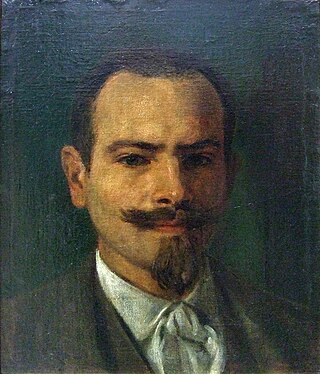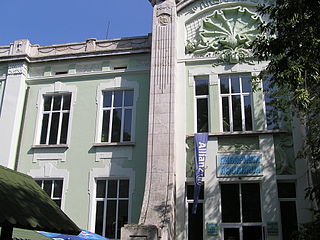
Sir Edwin Ray Lankester was a British zoologist.

Étienne-Jules Marey was a French scientist, physiologist and chronophotographer.

Felix Anton Dohrn FRS FRSE was a prominent German Darwinist and the founder and first director of the first marine-biological and zoological research station in the world, the Stazione Zoologica in Naples, Italy. The institution became a centre for the exchange of biological ideas through the network of visitors from around the world. He worked on embryology and examined vertebrate origins in terms of functional phylogeny and proposed a principle of succession of functions in 1875 on how one organ could become the basis for the evolution of another of an entirely different function. He was an elected International Member of the American Philosophical Society. The institution transitioned from a private one to a public Italian organization through the subsequent management by his son Reinhard Dohrn.

The Max Planck Institute for Evolutionary Biology is a German institute for evolutionary biology. It is located in Plön, Schleswig-Holstein, Germany.

Ernest Everett Just was a pioneering biologist, academic and science writer. Just's primary legacy is his recognition of the fundamental role of the cell surface in the development of organisms. In his work within marine biology, cytology and parthenogenesis, he advocated the study of whole cells under normal conditions, rather than simply breaking them apart in a laboratory setting.

Adolf Naef was a Swiss zoologist and palaeontologist who worked on cephalopods and systematics. Although he struggled with academic politics throughout his career and difficult conditions during World War I and II, his work had lasting influences on the fields of phylogenetics, morphology, and embryology.

Nicolaus Kleinenberg was a Baltic German zoologist and evolutionary morphologist.

The Varna Aquarium or Aquarium Varna is a public aquarium in Varna, Bulgaria's largest city on the Black Sea coast.

Emil Otto Zacharias was a German zoologist and plankton researcher, as well as popularizer of science and journalist.
Antonio della Valle was an Italian zoologist who specialised in Amphipoda and Ascidiacea.

Anton Dohrn was a motor yacht built during 1911 and delivered to the Carnegie Institution of Washington in June 1911 for use at its Department of Marine Biology laboratory at Dry Tortugas, Florida. The institution leased the vessel to the United States Navy for use as a patrol boat during World War I to serve as USS Anton Dohrn 5 October 1917 – 2 January 1919. The vessel remained in service for the institution until 1940 when Anton Dohrn was given to the Woods Hole Oceanographic Institution which used the vessel until 1947 for work between the Gulf of Maine and New Jersey. In 1947 the vessel was sold for use as a mail boat between New Bedford and Cuttyhunk Island.
Heinrich Hermann Robert Hartmeyer was a German zoologist.
Hugo Eisig was a German marine zoologist.
William Alford Lloyd was an English self-taught zoologist who became the first professional aquarist.

Paolo Panceri was an Italian naturalist. Panceri graduated in medicine at the University of Pavia where he began his research. In 1861 he took the Chair of Comparative anatomy at the University of Naples, where he directed the Zoology Museum. Panceri was cautious about the scientific validity of evolutionary theories but was instrumental in the foundation of the Stazione Zoologica Anton Dohrn. His findings on the bioluminescence of marine invertebrates and studies of Amphioxus led to fame in Italy and abroad. In 1874 he sold his books and scientific papers to Biblioteca Universitaria di Napoli to pay for an expedition to Egypt. They constitute an example of a nineteenth-century library specializing in the natural sciences and comparative anatomy. His students in Naples include Carlo Emery, Leopoldo Maggi and Antonio della Valle. He died aged 44.
Raffaello Bellini was an Italian zoologist.
Heinrich Otto Wilhelm Bürger was a German zoologist who specialised in Nemertea. He studied at several universities and at Stazione Zoologica in Naples. He gained his doctorate at the University of Göttingen under Ernst Ehlers. Between 1900 and 1908, he was Professor and Director of theZoology museum in Santiago de Chile. He later, still in South America, lived as a gentleman scientist, travel writer and economic geographer.
Friedrich Wolfgang Martin Henze was a German chemist.

A Science on the Scales: The Rise of Canadian Atlantic Fisheries Biology, 1898-1939 is a 2011 book by Jennifer Hubbard. The book provides an analysis of Canadian fisheries history with the tools of the professional historian, when most earlier works on the topic came from fisheries scientists themselves.

Rinaldo Dohrn or in the German form Reinhard Dohrn was a zoologist, the son of Anton Dohrn he took up directorship of the Zoological Station of Naples in 1909 following the death of his father.
































